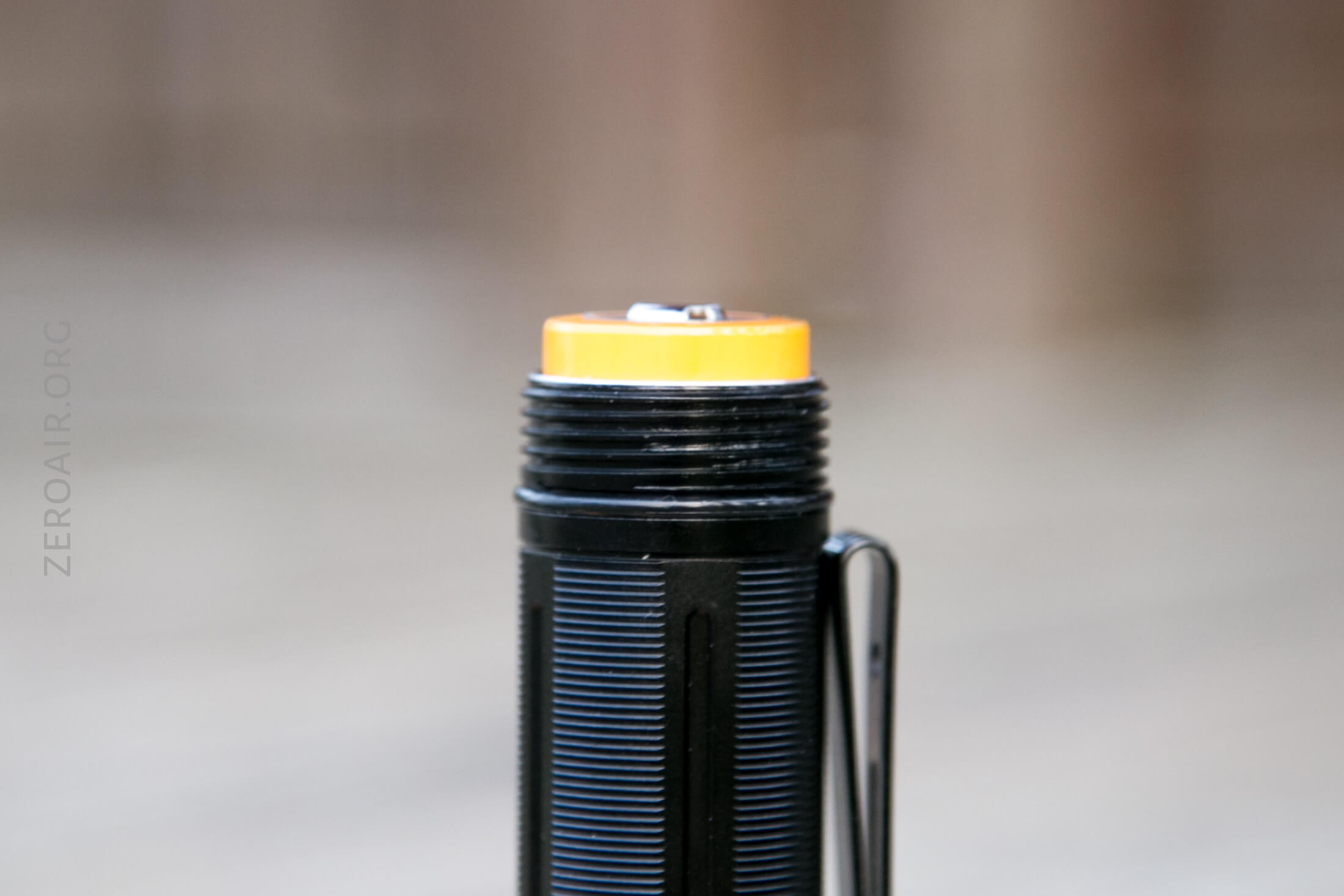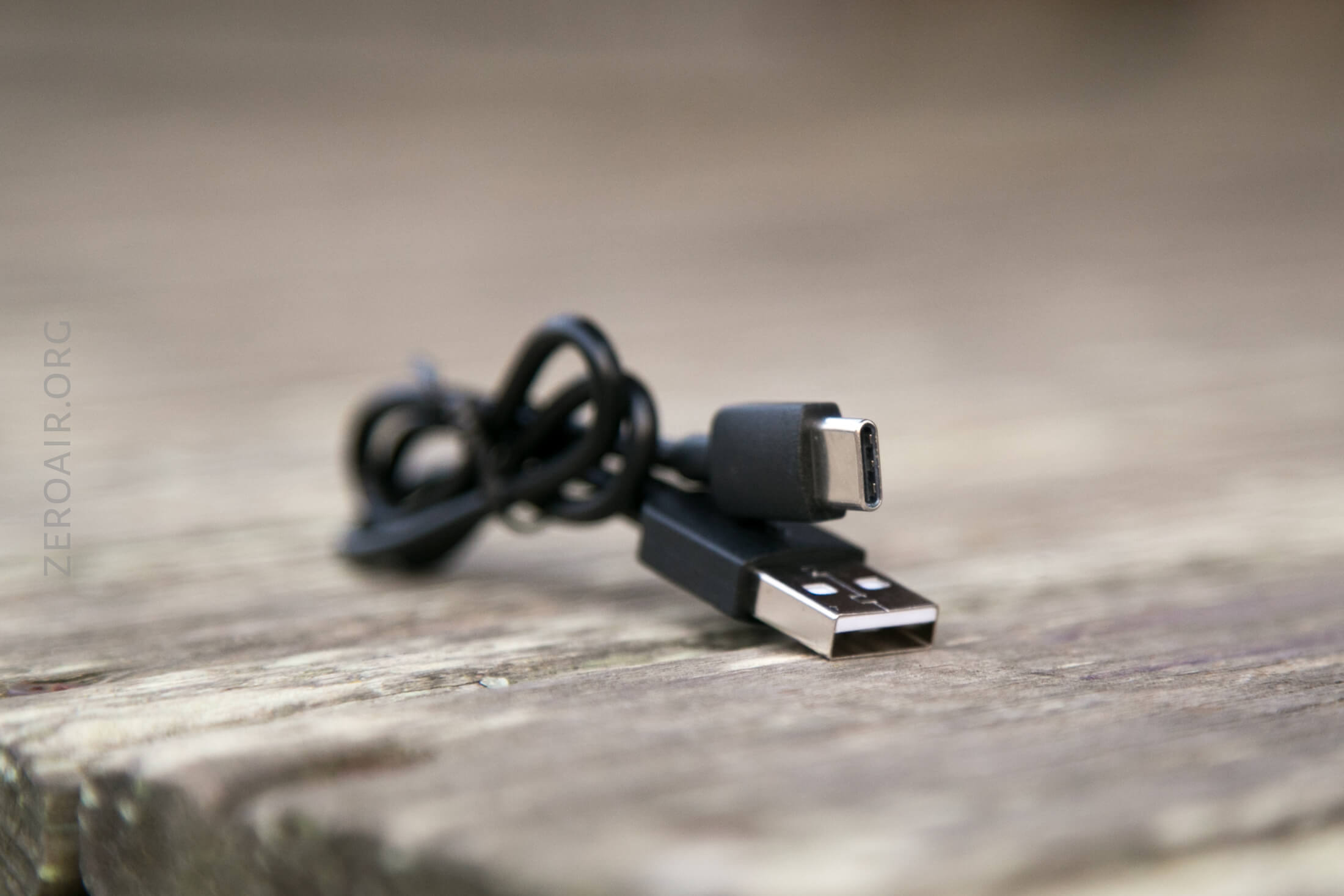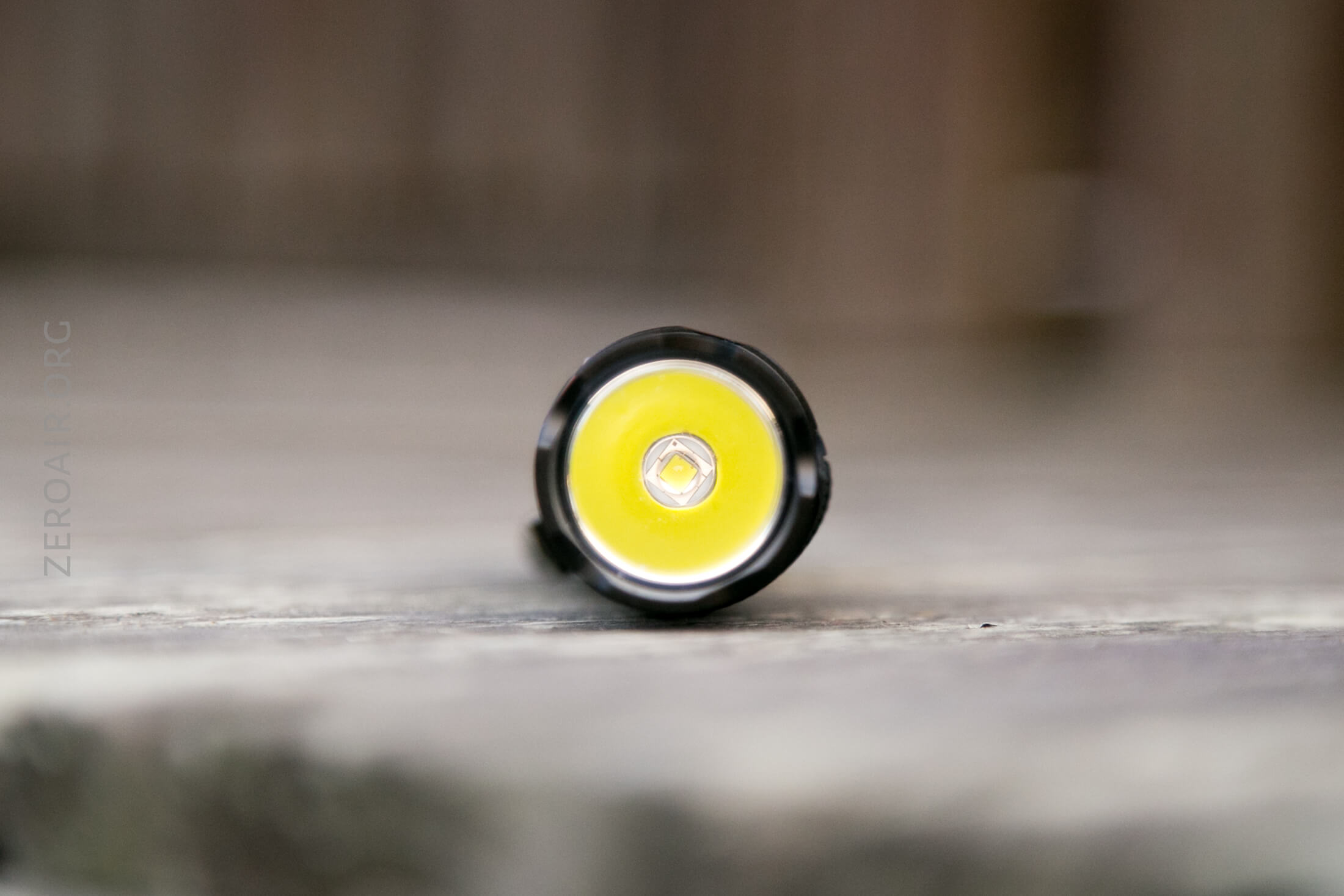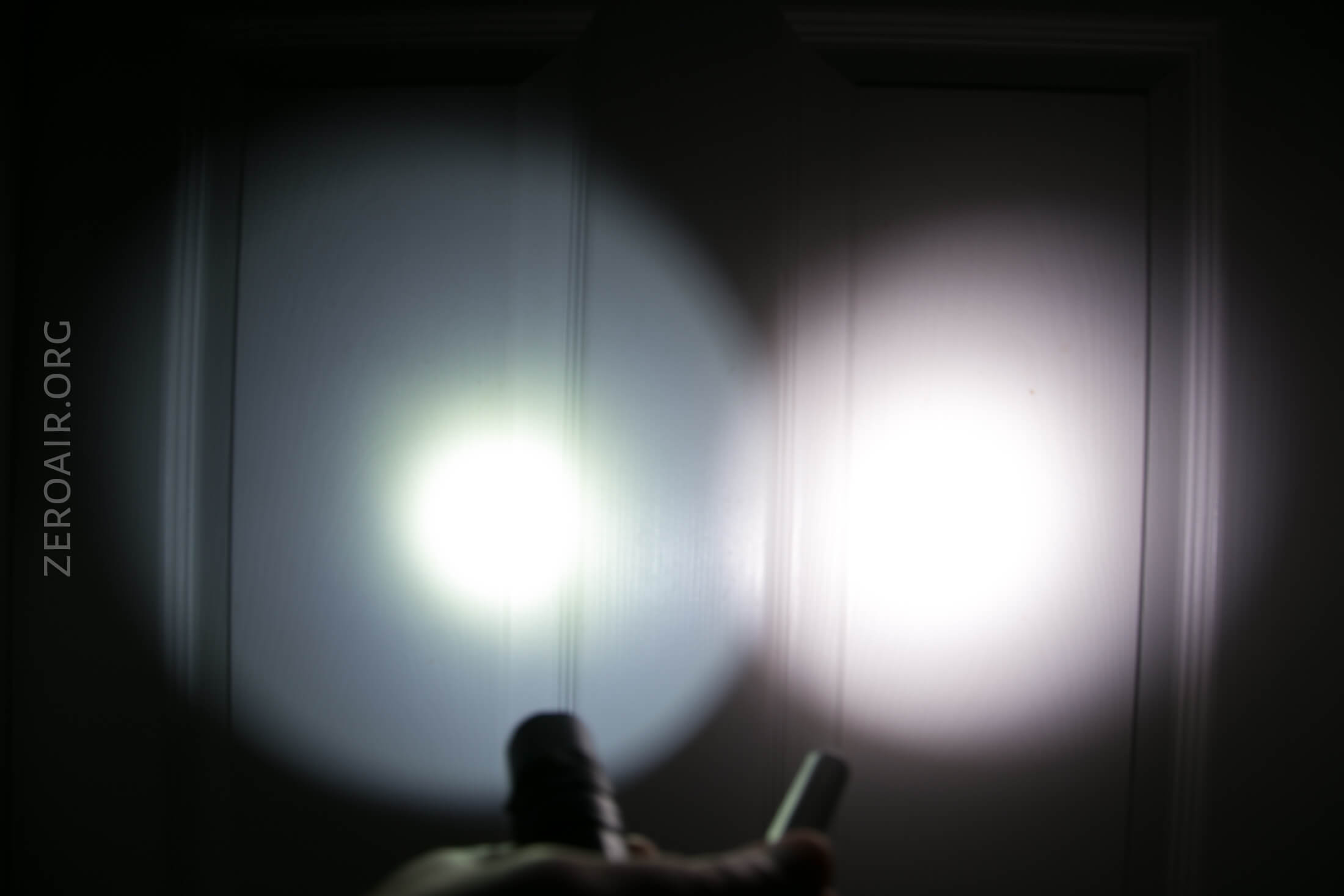Fenix PD36R Flashlight Review
The Fenix PD36R flashlight is a very feature-rich 21700 light. It has USB-C charging, dual switches, and other cool features. Read on!
Official Specs and Features
Here’s a link to the Fenix PD36R flashlight product page.
Versions
There’s only one version of this light. Custom Shop finishes by Fenix are available for this model, however.
Price
The light is sale priced at $99.95.
Short Review
I can’t think of a thing to complain about in this light. It meets its specifications and is a reasonably priced complete package light.
Long Review
The Big Table
| Fenix PD36R Flashlight | |
|---|---|
| Emitter: | Luminus SST40 |
| Price in USD at publication time: | $99.95 |
| Cell: | 1×21700 |
| Turbo Runtime | High Runtime |
| LVP? | Yes |
| Switch Type: | Dual |
| On-Board Charging? | Yes |
| Chargetime | |
| Power off Charge Port with no Cell? | No |
| Claimed Lumens (lm) | 1600 |
| Measured Lumens (at 30s) | 1817 (113.6% of claim)^ |
| Claimed Throw (m) | 283 |
| Candela (Calculated) in cd (at 30s) | 719lux @ 5.451m = 21364cd |
| Throw (Calculated) (m) | 292.3 (103.3% of claim)^ |
| All my Fenix reviews! | |
^ Measurement disclaimer: Testing flashlights is my hobby. I use hobbyist-level equipment for testing, including some I made myself. Try not to get buried in the details of manufacturer specifications versus measurements recorded here; A certain amount of difference (say, 10 or 15%) is perfectly reasonable.
What’s Included
- Fenix PD36R Flashlight
- Fenix 5000mAh 21700
- Charge cable (USB to USB-C)
- Nylon pouch
- Lanyard
- Spare o-ring
- Spare switch boot
- Manual and paperwork
Package and Manual
Typical Fenix black and orange(ish) package.
The manual is good, and displays many (7 or 8) languages.
Build Quality and Disassembly
The PD36R is well built. There’s nothing glaringly bad, and everything works like it should. I like the e-switch cover in particular, as I’m partial to metal switch covers.
The sticker inside the tube is a shade confusing. That’s not a “negative” symbol – don’t put the cell with the negative end here.
The tail end of the light has a big thick spring. This is a two-piece body, and best I can tell, it’s not possible to access the mechanical switch.
The head end has only the contact points – no spring.
The threads are appropriately lubed, anodized, and square-cut. They’re very smooth threads. Because of the anodizing, it’s possible to mechanically lock the light out (though it’d be meaningless, since the tailswitch is mechanical).
The driver looks to be screwed in, and there are two holes for unscrewing.
Size and Comps
Officially:
Size:
Length: 5.4” (136mm)
Body: 1.0” (25.4mm)
Head: 1.0” (26.4mm)
Weight: 3.0 oz. (85g) excluding battery
Here are a couple other 21700 lights. They have different feature sets; it’s understandable why the PD36R is longer.
Here’s the test light with the venerable Convoy S2+. Mine’s a custom “baked” edition Nichia 219b triple. A very nice 18650 light.
And here’s the light beside my custom engraved TorchLAB BOSS 35, an 18350 light. I reviewed the aluminum version of that light in both 35 and 70 formats.
Retention and Carry
There’s a nylon pouch included. There’s no good reason the light won’t go in the pouch in either orientation, except the pocket clip…. every time I tried bezel up, the clip caught as seen in the left picture. If you decide to futz with that, then it’ll physically fit.
Also for retaining the light is a two-way friction fit pocket clip, which attaches only on the tail end. It’s quite snug, and can hold the lanyard thorough a hole in the shoulder.
An included lanyard rounds out the package. It may be attached on the pocket clip, or even better, through holes in the tailcap. The photo below gives a good picture of why the light won’t tailstand – the boot is very proud.
Power and Runtime
Fenix includes the cell appropriate for this light. It’s a 21700 cell, in this case a button top. Fenix labels this as a 5000mAh 21700.
Runtimes for Turbo and High follow. The drop off Turbo is fairly quick, then the light holds 1400 lumens for a good 20 minutes, then around 950 lumens for around 100 minutes. The light didn’t shut off, but output became so low, you’ll notice lowered output.
High output is stable for around 20 minutes, then rock-solid flat for 320 minutes.
Charging
The PD36R includes on-board charging, and impressively it’s via USB-C. A USB to USB-C cable is included.
The charge port cover works fairly well, and stays put when it’s pressed down.
I’m charging here from a USB port capable of around 2.4A, and the USB-C Fenix seems to like it.
I don’t know why the charging bounces around like this, but it still stays at a high current, and charges quickly.
Despite being USB-C, the light can not output power from the port.
Modes and Currents
| Mode | Mode Claimed Output (lm) | Claimed Runtime | Measured Lumens | Tailcap Amps |
|---|---|---|---|---|
| Turbo | 1600 | 2h50m | 1817 | 4.36 |
| High | 800 | 5h49m | 909 | 1.43 |
| Medium | 350 | 8h24m | 374 | 0.50 |
| Low | 150 | 26h | 155 | 0.2 |
| Eco | 30 | 115h | 31 | 0.04 |
Pulse Width Modulation
This isn’t actually PWM, it’s … that other thing I can never think what it’s called.
For reference, here’s a baseline shot, with all the room lights off and almost nothing hitting the sensor. Also, here’s the light with the worst PWM I could find. I’m adding multiple timescales, so it’ll be easier to compare to the test light. Unfortunately, the PWM on this light is so bad that it doesn’t even work with my normal scale, which is 50 microseconds (50us). 10ms. 5ms. 2ms. 1ms. 0.5ms. 0.2ms. In a display faster than 0.2ms or so, the on/off cycle is more than one screen, so it’d just (very incorrectly) look like a flat line. I wrote more about this Ultrafire WF-602C flashlight and explained a little about PWM too.
User Interface and Operation
There are two switches on the PD36R. The first is a mechanical tail clicky. If this switch is “on”, then the light is on. If this switch is “off” then the light can not turn on.
The second switch is a side, indicating e-switch, made of what looks to be copper, but is likely bronze coated metal. The center of the switch has an indicator behind it.

This is a good dual-switch interface.
Here’s a UI table!
| State | Action | Result |
|---|---|---|
| Off | Click Tail Switch (TS) | On (Mode Memory) |
| Off | Half press TS | Momentary memorized mode^ |
| On | Click TS | Off |
| On | Hold SS | Strobe |
| Strobe | Click SS | Previous mode |
| On | Click SS | Mode advance (L>H direction) |
^ Modes may be changed with SS while half-pressing TS.
LED and Beam
The emitter Fenix chose for this light is a Luminus SST-40. The reflector is smooth and deep.
When the head is tightened down, the indicating switch tells how much power the cell has.
Green Steady: 85-100% power
Green Flashing: 50-85% power
Red Steady: 25-50% power
Red Flashing: 1-25% power
The switch also indicates when the cell power is low during use; red flashing only.
Light is able to escape when the light is headstanding.
These beamshots are always with the following settings: f8, ISO100, 0.3s shutter, and manual 5000K exposure.
Tint vs BLF-348 (KillzoneFlashlights.com 219b version) (affiliate link)
I compare everything to the Killzone 219b BLF-348 because it’s inexpensive and has the best tint!
Conclusion
What I like
- Meets and exceeds specification
- Good complete package light
- Utilizes USB-C for charging
- Fast charges the 5000mAh 21700
- Metal e-switch cover
- Indicating side-switch
What I don’t like
- No direct access to low
- Overall long light
- Can’t tailstand
Notes
- This light was provided by Fenix for review. I was not paid to write this review.
- This content originally appeared at zeroair.org. Please visit there for the best experience!
- For flashlight-related patches, stickers, and gear, head over to PhotonPhreaks.com!
- Use my amazon.com referral link if you’re willing to help support making more reviews like this one!
- Please support me on Patreon! I deeply appreciate your support!





























































I like want to purchase
Hey, could you help me. I need to see if the PD36R can be charged using usb-c to usb-c. Like from a cell phone charger that has a usb-c to usb-c cable. Not original usb (type A) to usb-c. Could you test for me please?
Tested it this morning, and yes, the PD36R seems to work fine on a USB-C to USB-C cable. Looks to charge at around 1.15A or so (quick test only).
PD36R instance with a cold, freshly turned on light, flicker (PWM) is very noticeable in the first 30 lumen mode. however, it is worthwhile to “warm up” the lamp for at least 10-15 seconds in the 800 or 1600 lumen mode, and after that even in the 30 lumen mode the flicker (PWM) completely disappears.
in all other modes above 30 lumen even if you turn on the lamp from a cold state. no flicker (PWM).
in your photos with PWM measurements, my version is clearly indirectly confirmed. PWM is clearly in 30 lumen mode.
Does the same thing happen with your PD36R instance?
I don’t really know the answer to your question. I did test from low to high, so maybe the readings would be different if I warmed the light up in higher modes? But I don’t find that to be a realistic use scenario for me. If I want low I’m going to start in low. And if low has PWM, well then….
Also this isn’t true pwm. It’s more commonly referred to as “sawtooth” but I still can’t remember the proper name for this.
zeroair,
And still!
please try to turn on your PD36R in ECO mode (30 lumens) when it lies at room temperature for several hours and completely cools down.
Do you notice how the hotspot blinks (as if flickering at a low frequency)?
Maybe I’m not exactly sure what you’re asking but….
I just turned the light, which was at room temperature, on into Eco mode, and watched the output via the scope (ie, for PWM) and after any amount of time it looks exactly like the PWM test in the ECO mode shown in the PWM section. It doesn’t change to any lower frequency, and it doesn’t seem to be flickering visibly.
Is the step-down in Turbo and High due to thermal regulation? If I use this in a cold climate will it still decrease to ~450 lm in High? I want to use this as a helmet light for snowmobiling but I don’t thing 450 lumens is bright enough. Any idea what the throw would be at that level?
The step down at 20 min. mark is timed on both Turbo and High, regardless if the light is cold or not, it will step down after 20 min. Of course you can bump that up again, no problem.
Thanks for this straight forward review.
I really like Fenix lights but I want them to have direct access to low lumens. If they let you push and hold the side switch to access a super low lumen made that would be awesome.
Could you recommend a light similar to this one with internal charging capabilities, tail switch and instant access to a low light mode?
Would the thrunite TC15 be comparable?
Thanks.
Maybe the Acebeam EC35 Gen II? Has a low of 0.5 lumens, dual switch, and onboard charging.
http://acebeam.com/ec35-gen-ii
Yeah, looks like the TC15 would be a pretty good choice too.
I don’t understand what you two are talking about when you say it doesn’t have direct access to Low. If you set it to Low and then turn it off with the TS, the next time you click the TS, it should directly access Low. Am I missing something?
What you’re describing is circumstantial direct access to low. This is not the same thing as always having direct access to low.
Does it have the side switch feature lock out like the PD35 Tac?
Not according to the manual.
What is the runtime of the PD36r when using strobe?
I could only quote whatever the manual says. I do not test strobe runtimes.
Very interesting that both the LD30 and E30R can sustain 800 lumens on high, but the PD36R drops to around 500, albeit for a much longer overall time.
Bought the flashlight. Clip does not seem like it will hold the flashlight in my pocket. Clip and body of flashlight is so smooth that it offers no resistance to falling out. I’m worried that I won’t have this light for very long.
I thought Fenix Store was the official Fenix site for the USA? They look like all the same prices and models. Are they getting the higher lumens by using a different type of battery?
Pingback: Fenix PD36 TAC Flashlight now Available – PhotonPhreaks
Pingback: Fenix PD36 TAC Flashlight Review - ZeroAir Reviews
Pingback: Fenix TK30 LEP Flashlight Review - ZeroAir Reviews
Pingback: Goodbye 2020, Welcome 2021! - ZeroAir Reviews
Pingback: Goodbye 2019, Welcome 2020! - ZeroAir Reviews